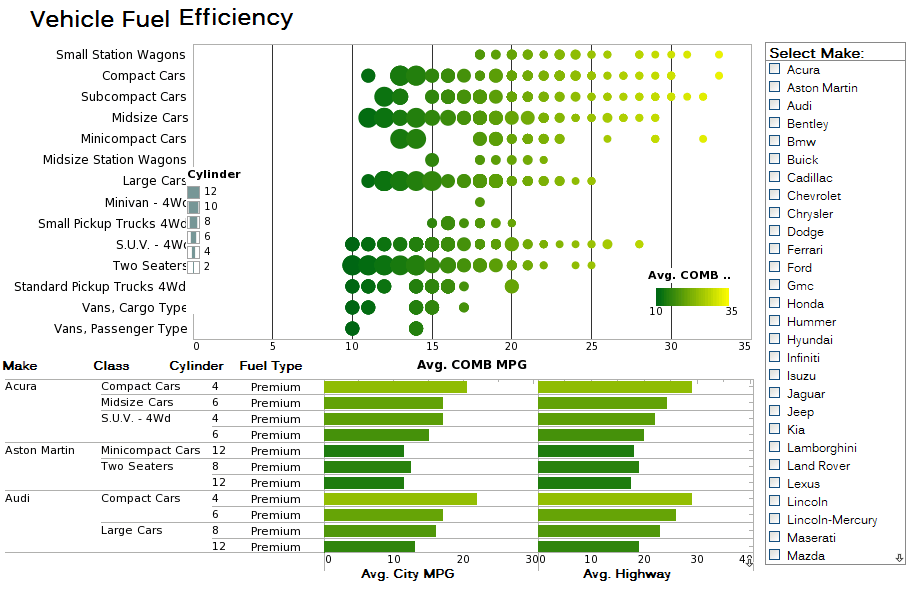Enterprise Information Integration
Below is the continuation of the transcript of a Webinar hosted by InetSoft on the topic of Agile Data Access and Agile Business Intelligence. The presenter is Mark Flaherty, CMO at InetSoft.
Mark Flaherty (MF): Optimization and transformation, really fundamentally it’s all about for all the data that’s been cleansed within your agile data access environment so that everybody is working from a common set of master data and from the very best models and views and analytics available at any point in time within your extended value chain and that way you push the bar forward to seize new opportunities before your competitors get there.
So that’s the broad vision and that’s really the broad program you need to implement to enable agile data access. Now in terms of architecting and I am not going to spend an inordinate amount of time on this particular slide because clearly as you can see it gets fairly involved. Typically when you have structured data that’s often the normal form and traditional RDBMS, that clearly is very important, that clearly is the core for most companies data services efforts. |
View a 2-minute demonstration of InetSoft's easy, agile, and robust BI software. |
Monitoring of Social Media for Sentiment Analysis
But going forward as you roll out agile data access thinking in the broader context of agile information services where it includes semi-structured information such as XML documents and unstructured information that you may be sourcing from enterprise content management systems or social media, let’s say you are doing monitoring of social media for sentiment analysis, you need to think through bringing all that information into your agile data access environment in a unified way.
Integrating social media data into an enterprise data platform to monitor sentiment analysis can significantly enhance a company's understanding of its brand perception, customer satisfaction, and market trends. The process involves several key steps to ensure the effective collection, processing, and analysis of social media data. Firstly, it's crucial to identify the relevant social media platforms where your target audience engages the most. This could include popular platforms like Twitter, Facebook, LinkedIn, Instagram, and industry-specific forums or communities. Each platform may require different APIs or data scraping techniques to extract data effectively.
It's essential to establish clear data governance policies to ensure compliance with privacy regulations and protect user data. Once the social media data sources are identified, the next step is to develop robust data pipelines to ingest the data into the enterprise data platform. This involves setting up automated processes to gather real-time or batch data from various sources and transform it into a unified format that can be easily analyzed. Leveraging technologies like Apache Kafka or Apache NiFi can streamline data ingestion and ensure scalability as data volumes grow.
After ingesting the data, sentiment analysis algorithms can be applied to quantify the sentiment expressed in social media posts, comments, and conversations. Natural language processing (NLP) techniques, such as sentiment lexicons, machine learning models, or deep learning algorithms, can be used to categorize the sentiment as positive, negative, or neutral. Additionally, entity recognition algorithms can identify key entities mentioned in the text, such as product names or brand mentions, to provide deeper insights into specific topics or trends.
Finally, integrating the sentiment analysis results into existing analytics dashboards or business intelligence tools allows stakeholders to monitor and analyze social media sentiment alongside other key performance indicators (KPIs). Visualizations like sentiment trend charts, word clouds, or sentiment heatmaps can provide intuitive insights into shifts in public opinion, emerging issues, or areas of concern. By continuously monitoring social media sentiment, businesses can proactively address customer concerns, capitalize on positive feedback, and adapt their marketing strategies to better resonate with their audience.
Need to Have Access to Disparate Information
So really that’s where direct access to operational data stores, such as what StyleBI provides, comes in. The very first big bullet point here, you need to have a direct access to all this disparate information no matter what the source format is. And the information will not be just in your data warehouse. It will be in your transaction processing systems like CRM and ERP. It will be in various internal systems like those and external systems as well. It will be in various formats. Some of that will be at a very granular transaction level, some will be highly aggregated. Regardless you need to provide a mashed up, unified and simplified access to it all.
It’s often called data federation or enterprise information integration or data virtualization, of course. That’s critically important. That’s a key enabler. You also need to normalize access to this information meaning within your agile data access infrastructure, transform it, convert it to some set of canonical object models or schemas or views that can then be all rolled up in a unified way and administered and accessed through a common set of APIs and interfaces and the like.
| Previous: An Agile Data Access Environment |
